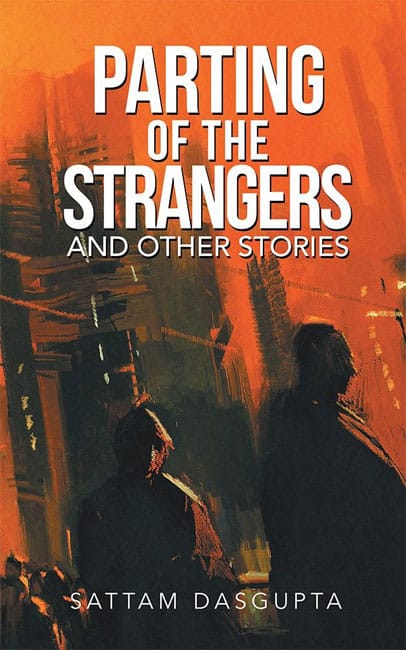PLOT: 4/5
CHARACTERS: 3/5
WRITING STYLE: 4/5
CLIMAX: 4/5
ENTERTAINMENT QUOTIENT: 4/5
Parting of the Strangers and Other Stories is a collection of sixteen odd short stories written mostly in the first-person narrator “I”. The characterisation is minimal as Dasgupta stresses on building up eventful plots. The stories are filled with an aura of surprise and suspense at the same time.
The plots are clean with very little cluttering. It mentions only what is absolutely necessary and required to allow for the stories to flow smoothly through. In this sense the plots are rather linear and far from intricate. Their complexity comes in holding up of the suspense till the very last word.
The stories in Parting of the Strangers and Other Stories reveal themselves slowly. Most of them deal with characters who are professionals in technical fields or engaged in simple everyday activities like driving, talking or doing some work.
It is a view into the relations of the adult world and the equations that men and women share mostly at work. Their professional and personal lives intermingle in these interactions that makes them share bits of themselves with others. Dasgupta focuses on trying to bring out the extraordinary in the ordinary. The tediousness of modern life is central to his stories.
From simple friendships, to momentary attraction, lust, extra marital affairs and other matters of the heart; the themes of the stories revolve around sensitive issues with a very casual and easy-going style of writing.
The narrative style has a suave that helps deal with these moments of difficulty. The stories are rather sad if not morbid as some of them end unhappily while others have positive endings though not exactly happy endings. But such is life and acceptance in dealing with situations is of foremost importance. In this sense, the stories are also realistic.
It is not to undermine the fact that they are very much relevant to modern work life. The balance between work and personal life is hard to maintain. It is this aspect that is highlighted the most.
It is in human nature to develop personal relations with colleagues and work mates but at times it may be difficult to draw the line. Most of the stories are sensitive, simple and emotional.
The language in Parting of the Strangers and Other Stories is free flowing with well framed dialogues and short sentences. Most of the stories are just about 3-4 pages long or less than that.
There is an interesting use of a simple but well-structured style of writing that very well suits the engineer in Dasgupta. This structured writing is matched with a proper choice of vocabulary that adds to the terseness of the text.
He also has an eye for detail that makes the plot descriptive and analytical. Everything is narrated to the reader who can sit back, relax and enjoy these short reads in a single sitting.
His focus is on moments and the dilemmas that the stories create and put individuals into. Characterisation is minimal and readers know little background information about the characters.
The stories also show how people put other people in difficult times that leads to a change of heart. These are the very same people who were once trustworthy acquaintances. How friends become foes and strangers become friends reflects that it only takes a moment to turn things around and relationships are full of many such memorable moments; both good and bad.
In Parting of the Strangers and Other Stories, Dasgupta delves into the little things in life. It is these little things that at one time make people elated like a woman who is expecting a baby or make people crumble into sorrow (like betrayal). It is all a part of life which does not come with a manual to work around and human nature is bound to remain unpredictable.
Dasgupta seems to be suggesting that one may not validate all the emotions they feel (both positive and negative) but one must acknowledge that they exist.
Can’t wait to read it? Buy your copy of Parting of the Strangers and Other Stories using the link below.
